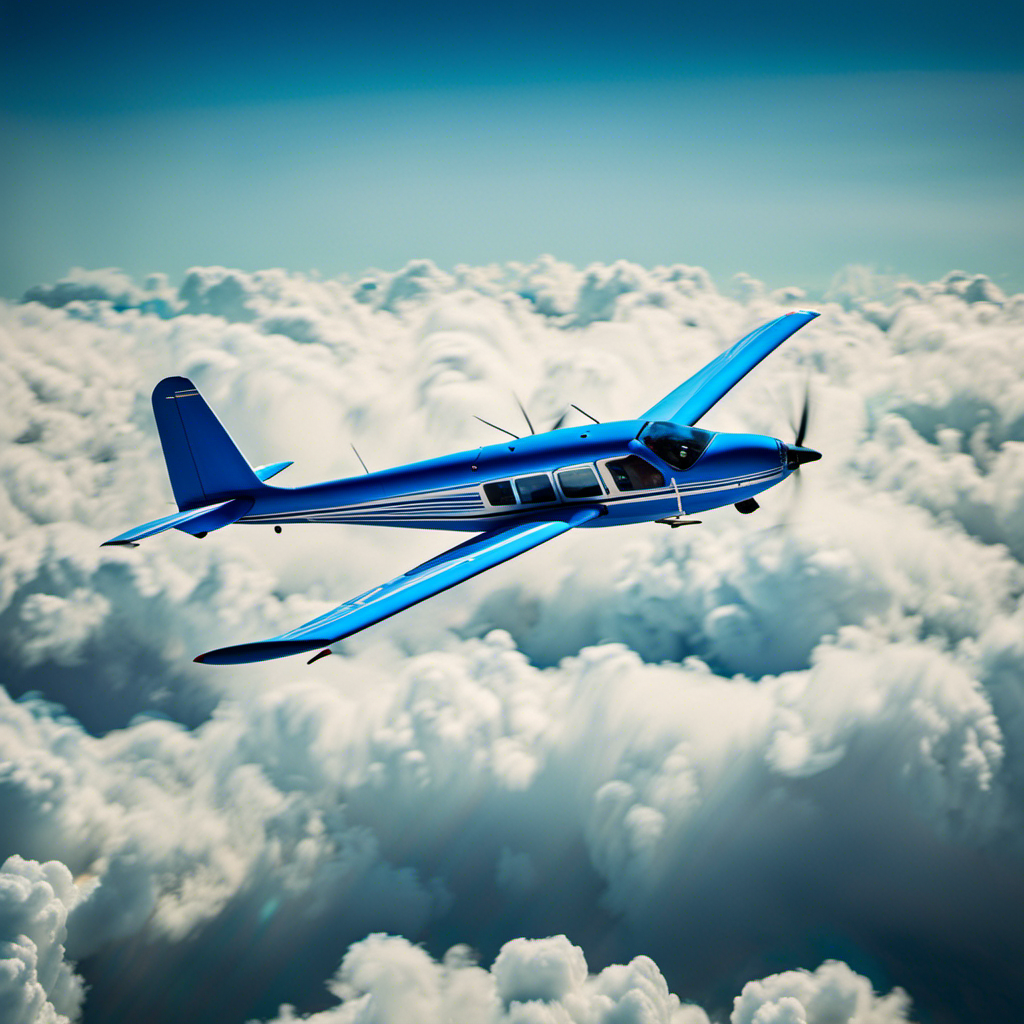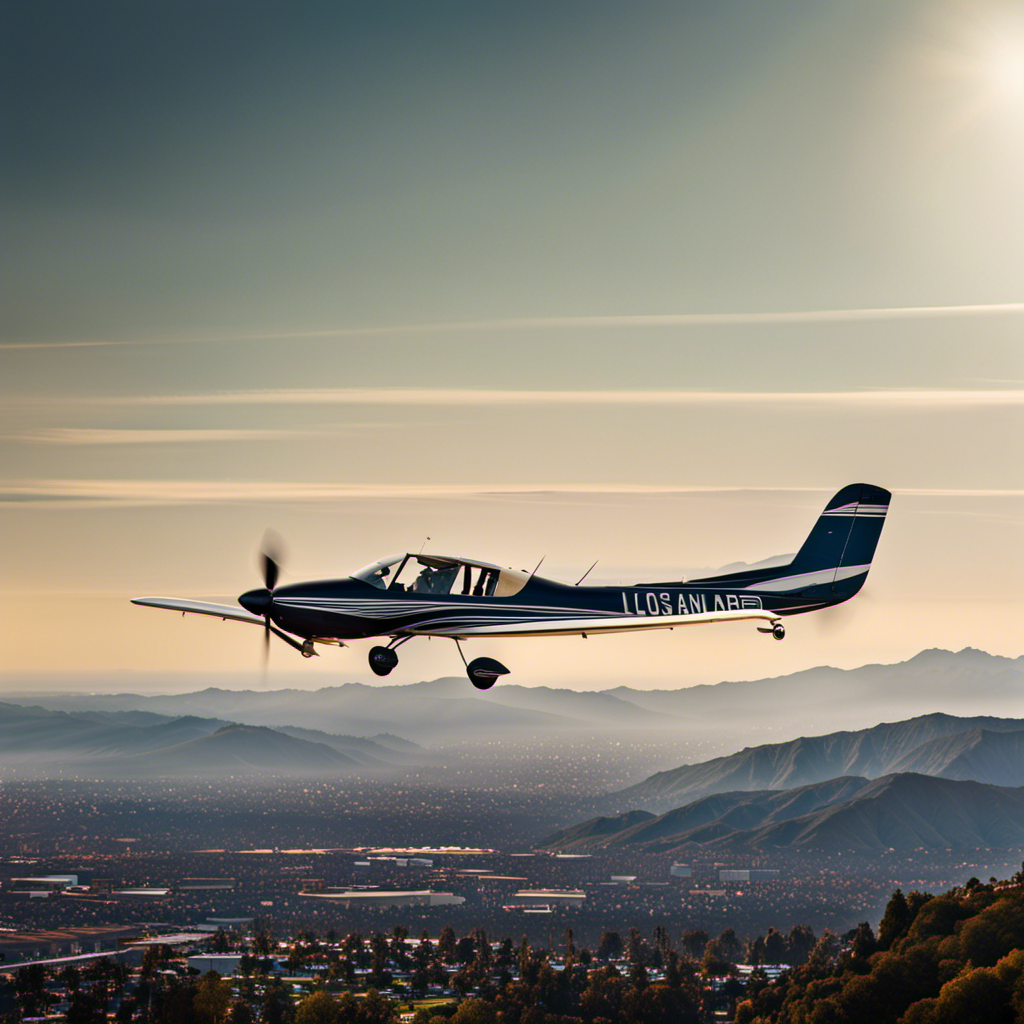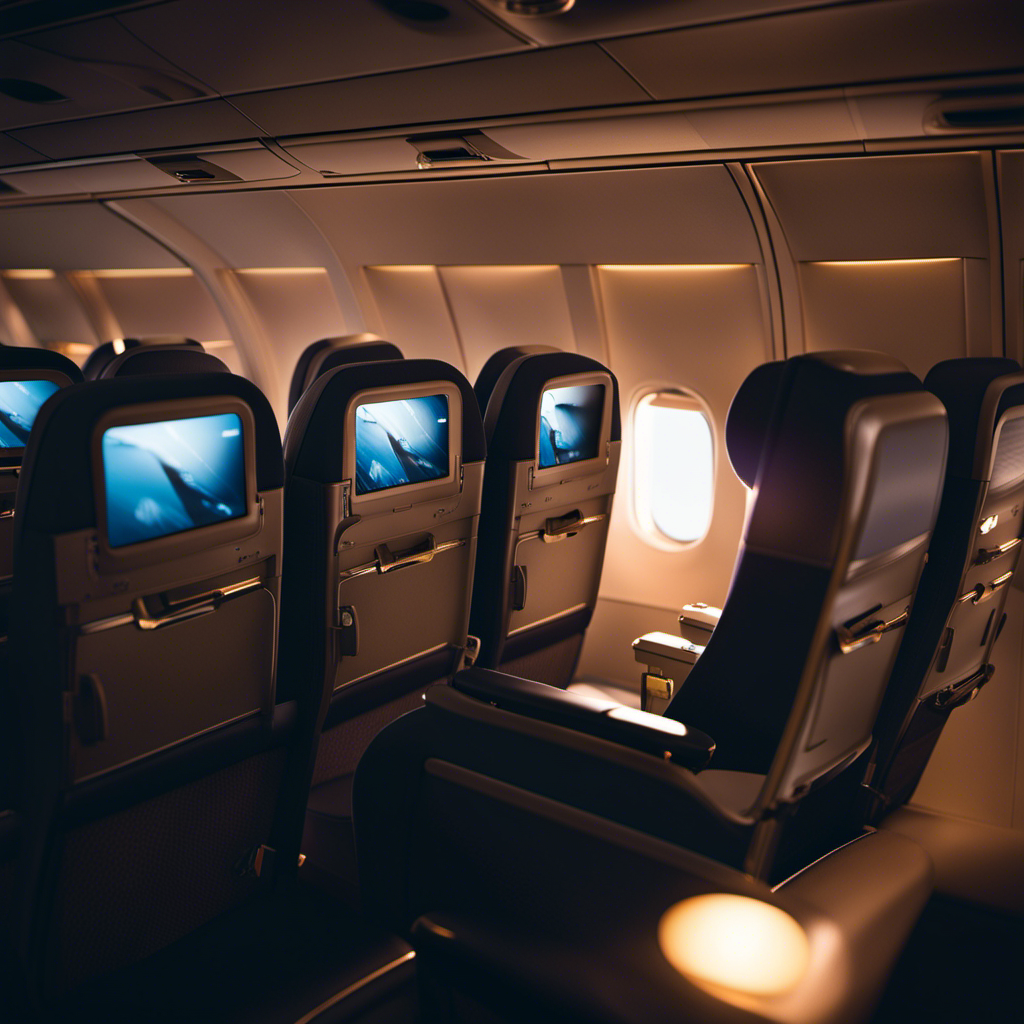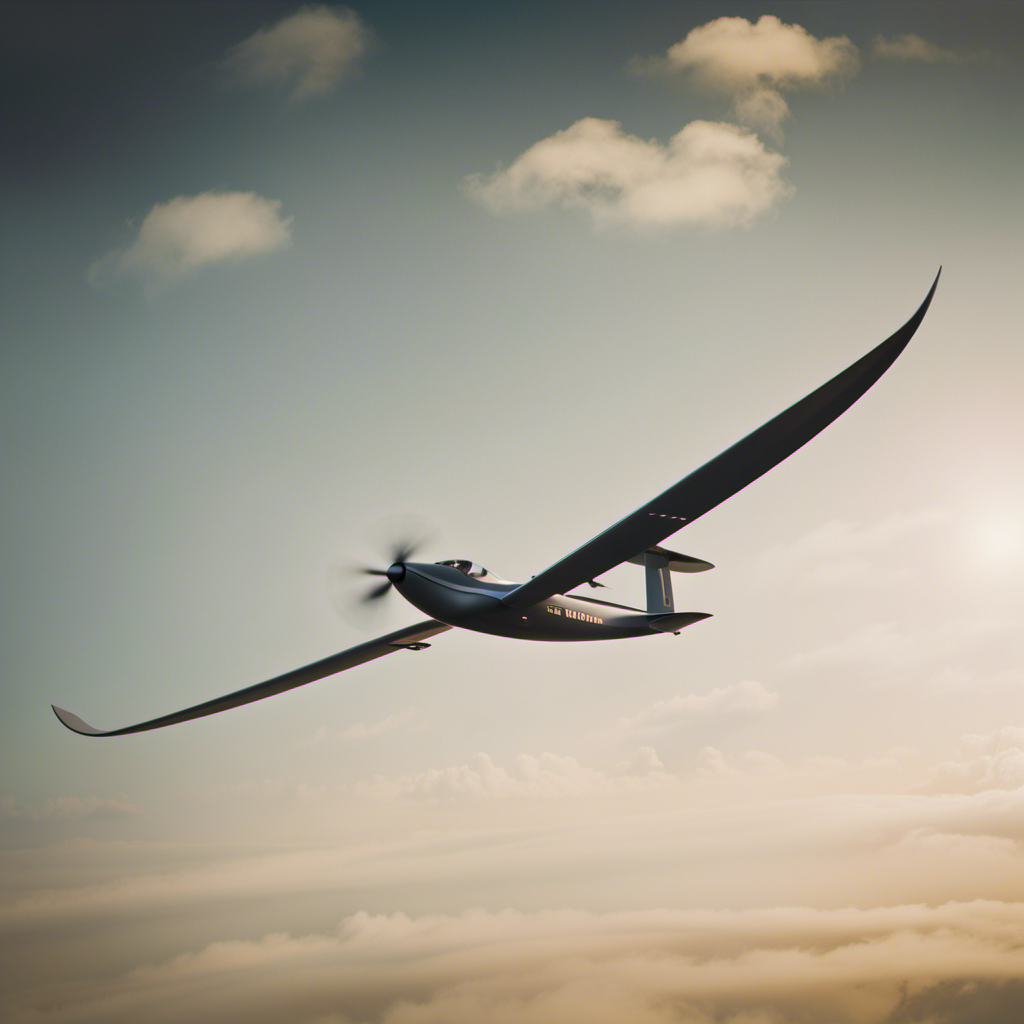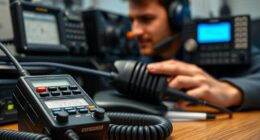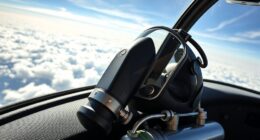As someone who has been gliding for many years, I can confirm the exhilarating feeling of soaring through the sky, relying solely on the wind beneath my wings.
However, it is crucial to prioritize safety above all else. In this article, I will provide you with essential tips and guidelines to ensure a safe flight in a glider.
From pre-flight checklists to emergency procedures, we will delve into every aspect of glider safety, equipping you with the knowledge you need for a smooth and secure journey.
Key Takeaways
- Complete pre-flight checklist and thorough inspection to ensure optimal condition of the glider
- Receive proper training and certification to enhance safety and proficiency in gliding
- Follow proper glider handling techniques and continuously monitor position, altitude, and speed during the flight
- Be prepared for emergency situations, practice emergency drills, and develop mental resilience to mitigate risks and make informed decisions
Pre-Flight Checklist
Before taking off, make sure you’ve completed your pre-flight checklist. This crucial step ensures that your glider is in optimal condition for a safe flight. The pre-flight inspection involves a thorough examination of the glider’s various components, such as the wings, tail, control surfaces, and landing gear. It is important to inspect for any signs of damage, such as cracks or loose fittings, as well as ensuring that all parts are securely fastened. Additionally, checking the glider’s instruments, such as the altimeter and variometer, is essential to ensure accurate readings during the flight.
In addition to the glider itself, it is equally important to consider the weather conditions before taking off. Weather plays a significant role in flight safety, as it can impact visibility, wind patterns, and the overall stability of the glider. Checking the current weather forecast, including wind speed and direction, cloud cover, and any potential storms, allows you to assess whether the conditions are suitable for flying. It is crucial to remember that gliders are highly sensitive to weather changes, and even a slight shift in conditions can greatly affect the flight.
Completing a thorough pre-flight inspection and considering the weather conditions are vital steps to ensure a safe flight. However, it is equally important to undergo proper training and certification before embarking on glider flights. This ensures that you have the necessary knowledge and skills to handle different situations that may arise during the flight, further enhancing safety.
Proper Training and Certification
Make sure you receive proper training and obtain certification to ensure a smooth and secure gliding experience. Simulation training and a comprehensive curriculum are essential components of this process.
Simulation training allows you to practice various gliding scenarios in a controlled environment, preparing you for real-life situations. It helps you develop the necessary skills and confidence to handle different weather conditions, emergency procedures, and navigation techniques.
A comprehensive curriculum covers all aspects of gliding, including theory, aerodynamics, meteorology, flight rules, and safety protocols. It provides you with a solid foundation of knowledge and ensures that you are well-prepared for any challenges you may encounter during your gliding adventures.
By undergoing proper training and obtaining certification, you demonstrate your commitment to safety and proficiency in gliding. It not only enhances your own confidence but also reassures your fellow gliders and instructors that you are well-equipped to handle the responsibilities of flying. The certification process typically involves written exams, practical assessments, and flight evaluations, ensuring that you have a thorough understanding of glider operations and safety procedures.
Maintaining a healthy physical condition is crucial for safe gliding.
Maintain a Healthy Physical Condition
Maintaining a healthy physical condition is crucial for a smooth and secure gliding experience. As a glider pilot, I understand the importance of being physically fit to handle the demands of flying.
To ensure my body is in optimal condition, I focus on maintaining physical fitness through regular exercise and a balanced diet.
Exercise plays a vital role in keeping my body strong and flexible. I engage in activities that target my core strength, such as yoga and Pilates, as well as cardio exercises like running and cycling. These activities help improve my endurance and overall physical fitness, enabling me to handle the physical demands of gliding.
In addition to exercise, proper nutrition and hydration are essential for maintaining a healthy physical condition. I make sure to fuel my body with nutritious foods that provide the necessary energy and nutrients for optimal performance. Hydration is also crucial, as staying properly hydrated helps prevent fatigue and ensures that my body functions at its best.
By prioritizing my physical fitness and taking care of my body through exercise, nutrition, and hydration, I am able to enhance my gliding experience and ensure a safe flight.
Transitioning into the subsequent section, I will now discuss how I plan and prepare for the flight to further ensure a smooth and secure journey.
Plan and Prepare for the Flight
To ensure a smooth and secure journey, I prioritize planning and preparing for the flight. Pre-flight preparation is crucial in ensuring a safe glider flight. One of the key aspects of this preparation is weather monitoring.
I closely monitor the weather conditions before every flight to make informed decisions. I check the current weather forecast, paying particular attention to wind speed and direction, cloud cover, and any potential weather hazards such as thunderstorms. By staying updated on the weather, I can anticipate and mitigate any risks that may arise during the flight.
In addition to weather monitoring, I also thoroughly inspect the glider before takeoff. I check the control surfaces, cables, and parachute to ensure they are in proper working condition. I also verify that the weight and balance of the glider are within the acceptable limits. This meticulous inspection is essential for the safety of the flight.
By planning and preparing for the flight, I can ensure a safe and enjoyable experience.
Now, let’s discuss how to follow safety procedures during takeoff and landing, which is equally important for a successful glider flight.
Follow Safety Procedures During Takeoff and Landing
When it comes to ensuring a safe flight, there are several key points to keep in mind during takeoff and landing.
First, it is important to perform thorough pre-takeoff and pre-landing checks to ensure that everything is in proper working order.
Additionally, following proper glider handling techniques is crucial in maintaining control and stability throughout the process.
Lastly, being aware of wind conditions and making adjustments to the approach accordingly is essential for a smooth and safe landing.
Perform pre-takeoff and pre-landing checks
Before taking off or landing, it’s important to perform pre-flight checks to ensure a safe glider flight. These checks involve a thorough pre-flight inspection and a landing zone assessment. Here are three key items to address during these checks:
-
Pre-flight inspection: This involves examining the glider for any signs of damage or wear, checking the control surfaces and cables for proper functioning, inspecting the parachute and emergency equipment, and ensuring that all instruments are working correctly.
-
Landing zone assessment: It is crucial to evaluate the landing zone for potential hazards such as obstructions, wind direction, and surface conditions. This assessment helps in selecting the safest area for landing and reduces the risk of accidents.
-
Weather conditions: Before taking off or landing, it is essential to assess the weather conditions, including wind speed and direction, visibility, and any potential weather hazards. This information helps in making informed decisions about the flight.
Performing these pre-flight checks ensures that the glider is in optimal condition and the landing zone is safe for a successful flight. Following proper glider handling techniques is the next crucial step to maintain safety.
Follow proper glider handling techniques
Mastering proper glider handling techniques is essential for you to have a smooth and controlled flight experience. In addition to performing pre-takeoff and pre-landing checks, it is crucial to maintain your glider regularly.
Glider maintenance plays a significant role in ensuring its optimal performance and safety. Regular inspections, cleaning, and addressing any mechanical issues promptly are essential steps to keep your glider in top condition.
Furthermore, it is crucial to consider the weather conditions before taking off. Understanding the wind speed, direction, and turbulence can help you make informed decisions during your flight. Being aware of the weather conditions allows you to adjust your approach accordingly and maintain control of your glider.
Be aware of wind conditions and adjust approach accordingly
Adjust your approach according to wind conditions to ensure a smooth and controlled flight experience. Here are four key factors to consider when it comes to wind direction and landing techniques:
-
Wind direction: Determine the prevailing wind direction before takeoff. This will help you anticipate how the wind will affect your flight path and landing approach.
-
Crosswinds: Be aware of any crosswinds that may exist during your flight. Crosswinds can create turbulence and make landing more challenging. Adjust your approach angle and speed accordingly.
-
Gusts: Keep an eye out for gusts of wind, which can suddenly increase or decrease in intensity. These gusts can affect your glider’s stability and control. Stay vigilant and make adjustments as necessary.
-
Landing technique: Choose the appropriate landing technique based on wind conditions. For example, if faced with a headwind, you may need to maintain a higher airspeed during your final approach to ensure a safe landing.
By adjusting your approach according to wind conditions and mastering the appropriate landing techniques, you can enhance the safety and control of your glider flight.
It is crucial to maintain situational awareness throughout your flight to anticipate any changes in wind conditions or other factors that may affect your flight path and decision-making process.
Maintain Situational Awareness
To ensure a safe flight, it’s important to always maintain situational awareness. Situational awareness refers to the ability to perceive and understand the current conditions and factors that may impact the flight. It involves actively observing and interpreting information from various sources, such as weather reports, aircraft instruments, and radio communications. This awareness allows for informed decision making throughout the flight.
Maintaining situational awareness involves continuously monitoring the aircraft’s position, altitude, and speed, as well as being aware of other air traffic in the vicinity. By staying alert and attentive, pilots can detect any potential hazards or deviations from the planned flight path. This information is crucial for making informed decisions, such as adjusting the altitude or route to avoid dangerous weather conditions or conflicting traffic.
Effective decision making relies heavily on accurate situational awareness. Pilots must be able to quickly process and analyze the information available to them, assessing the risks and identifying the best course of action. This may involve making timely decisions to divert to an alternate landing site or change the flight plan to avoid airspace restrictions. By maintaining situational awareness, pilots can make informed decisions that prioritize the safety of the flight.
Transitioning to the subsequent section on communication and coordination, effective situational awareness also enhances communication between pilots and air traffic controllers. By accurately relaying their current position and intentions, pilots can ensure coordination with other aircraft and receive necessary guidance from controllers. This seamless communication and coordination contribute to the overall safety and efficiency of the flight.
Communication and Coordination
Make sure you maintain clear and effective communication with air traffic controllers to ensure a smooth and coordinated flight. Communication plays a vital role in the safety and success of any flight, and gliding is no exception.
As a glider pilot, it is essential to develop effective communication strategies and understand the teamwork dynamics involved.
When communicating with air traffic controllers, it is crucial to use clear and concise language. Avoid jargon or technical terms that may cause confusion. Instead, use standard phraseology and speak in a calm and collected manner. This will help ensure that both you and the controller understand each other accurately.
Teamwork dynamics also come into play when communicating with other pilots and crew members. Establishing effective communication channels within your team is essential for proper coordination. This includes briefing each other before the flight, discussing the flight plan, and sharing any relevant information. Regular communication updates during the flight can help everyone stay informed and make necessary adjustments if needed.
In conclusion, maintaining clear and effective communication is crucial for a safe glider flight. By developing communication strategies and understanding teamwork dynamics, you can enhance safety and coordination in the air.
Now, let’s transition to the next section, where we will discuss how to manage risks and hazards during your glider flight.
Manage Risks and Hazards
When managing risks and hazards during your glider flight, it’s important to stay vigilant and aware of your surroundings at all times. Risk assessment and hazard identification are crucial steps in ensuring a safe flight.
Prior to takeoff, I conduct a thorough risk assessment by evaluating the weather conditions, terrain, and potential obstacles. This allows me to identify any potential hazards that may pose a threat during the flight.
During the flight, I remain attentive, constantly scanning the area for any signs of danger. I pay close attention to weather changes, such as sudden gusts of wind or darkening clouds, as these can indicate potential risks. By staying aware of my surroundings, I can proactively respond to any hazards that may arise.
In addition, I always make sure to have a plan in place for emergency situations. This includes practicing emergency procedures, such as how to handle a sudden loss of altitude or a malfunctioning instrument. By regularly practicing these procedures, I am better prepared to handle unexpected situations and mitigate risks.
Practice Emergency Procedures
When it comes to emergency situations, it’s crucial to familiarize myself with the appropriate procedures for various scenarios.
This includes knowing how to respond in the event of a fire, medical emergency, or natural disaster.
Regularly practicing emergency drills and simulations will help me become better prepared and ensure that I can react swiftly and efficiently when faced with a real-life crisis.
In addition, staying calm and composed during emergencies is essential as it allows me to think clearly and make rational decisions, potentially saving lives and minimizing further harm.
Familiarize yourself with emergency procedures for various scenarios
It’s important to familiarize yourself with emergency procedures for various scenarios to ensure a safe flight in a glider.
To acquire the necessary knowledge, there are various training resources available that provide comprehensive guidance on emergency landing techniques. These resources may include instructional videos, manuals, and even practical training sessions with experienced instructors.
By studying these materials and participating in hands-on training, pilots can develop a solid understanding of how to respond effectively in emergency situations.
Familiarizing oneself with emergency procedures is crucial as it enables pilots to react swiftly and calmly when faced with unexpected events during a glider flight. This knowledge empowers pilots to make informed decisions and take appropriate actions to mitigate risks.
Regularly practicing emergency drills and simulations further enhances this preparedness, allowing pilots to stay sharp and confident in their ability to handle emergencies.
Regularly practice emergency drills and simulations
Transition: Now that we have familiarized ourselves with the emergency procedures for various scenarios, it is crucial to regularly practice emergency drills and simulations.
Current Subtopic: Drills and simulations are of utmost importance in ensuring the safety of glider flights. They provide an opportunity to test our knowledge and skills in a controlled environment, allowing us to identify any gaps or weaknesses in our emergency response. By engaging in these exercises, we can enhance our ability to react swiftly and effectively during a real emergency situation.
To make the most of these drills and simulations, it is essential to follow some effective practices. Firstly, setting clear objectives and scenarios that mimic real-life emergencies helps to create a realistic training experience. Additionally, involving all crew members and conducting regular debriefings to analyze performance and identify areas for improvement can significantly enhance the effectiveness of these exercises.
Transition: With a solid foundation in emergency procedures and regular practice through drills and simulations, we can now focus on how to stay calm and composed during emergencies.
Stay calm and composed during emergencies
Remaining calm and composed during emergencies is crucial for effectively responding to the situation at hand. Emergency preparedness and mental resilience play a significant role in maintaining composure when faced with unexpected events.
By being prepared, we can reduce panic and make better decisions in high-pressure situations. It is important to have a plan in place and practice it regularly to ensure that we are ready to handle any emergency that may arise.
Developing mental resilience through training and exposure to stressful situations can help us stay focused and think clearly when faced with challenges. By remaining calm, we can effectively assess the situation, take appropriate actions, and minimize potential risks.
Transitioning to the next section, continuous learning and improvement are essential in enhancing our emergency response capabilities without becoming complacent.
Continuous Learning and Improvement
To ensure continuous learning and improvement in glider safety, it is crucial to actively participate in glider safety workshops and seminars.
These events provide valuable opportunities to gain knowledge and skills, exchange information with experts, and stay updated on the latest safety regulations and technologies.
Additionally, learning from past incidents and accidents can help identify potential risks and develop preventive measures to ensure the safety of future glider flights.
Participate in glider safety workshops and seminars
Make sure you attend glider safety workshops and seminars to stay updated on the latest safety protocols. These educational events provide valuable information on glider safety equipment and the importance of pre-flight inspections. By participating in these workshops and seminars, you can enhance your knowledge and skills in ensuring a safe flight.
-
Glider safety equipment:
-
Learn about the different types of safety equipment available for gliders, such as parachutes, emergency locator transmitters (ELTs), and fire extinguishers.
-
Understand how to properly inspect and maintain these equipment to ensure their functionality during emergencies.
-
Importance of pre-flight inspections:
-
Gain insights into the significance of conducting thorough pre-flight inspections to identify any potential issues or malfunctions.
-
Learn the step-by-step process of conducting pre-flight inspections, including checking the control surfaces, engine, fuel system, and overall airworthiness of the glider.
Attending these workshops and seminars will enable you to stay informed about new safety regulations and technologies, further contributing to the overall safety of glider operations.
Stay informed about new safety regulations and technologies
Stay informed about new safety regulations and technologies by attending workshops and seminars. These events provide a valuable opportunity to learn about the latest advancements in glider operations. By staying informed, pilots can ensure they are operating within the boundaries of the law and taking necessary precautions to ensure the safety of themselves and others.
Additionally, workshops and seminars often showcase the latest technological advancements in glider safety. This includes innovations in navigation systems, communication devices, and emergency equipment. By staying up to date with these technological advancements, pilots can enhance their safety practices and potentially prevent accidents or incidents.
Learning about new safety regulations and technologies is just one way to ensure a safe flight. It is equally important to learn from past incidents and accidents to prevent future occurrences.
Learn from past incidents and accidents to prevent future occurrences
By examining past incidents and accidents, you can gain valuable insights that will help you prevent similar occurrences in the future. Learning from the mistakes and mishaps of others is a crucial step in ensuring glider safety. Analyzing past incidents allows us to identify common patterns, root causes, and potential areas for improvement. To illustrate this, let’s take a look at a table showcasing three significant glider accidents and the lessons we can derive from them:
| Incident | Lesson Learned | Preventive Measures |
|---|---|---|
| Mid-air collision | Maintain proper communication and situational awareness | Install transponders and use radios for enhanced communication |
| Structural failure | Regularly inspect and maintain glider components | Implement a rigorous maintenance schedule and perform thorough inspections |
| Pilot error | Prioritize comprehensive training and proficiency checks | Emphasize continuous pilot education and recurrent training programs |
Frequently Asked Questions
What are the common risks and hazards associated with glider flying?
Common risks and hazards in glider flying include weather conditions, mechanical failures, and pilot error. Training frequency is crucial to mitigate these risks. Physical disqualifications can also pose a hazard. Emergency procedures and staying updated on safety protocols are essential for a safe flight.
How often should I undergo training and certification to maintain my glider flying skills?
I should undergo glider training and certification regularly to maintain my flying skills. The frequency of certification depends on various factors, such as experience level and regulations, but typically it is recommended every 2-3 years.
Are there any specific physical conditions or health issues that would disqualify someone from flying a glider?
Physical disqualifications and health issues can prevent someone from flying a glider. Certain conditions, such as heart problems, epilepsy, and vision impairments, can pose risks and may disqualify individuals from participating in glider flying.
What are some emergency procedures that glider pilots should be familiar with?
Emergency procedures are crucial for glider pilots to know, including how to handle emergency landings. It’s ironic that even though gliders don’t have engines, we still need to be prepared for emergencies.
How can I stay up to date with the latest safety practices and improvements in glider flying?
Staying informed about safety updates in glider flying is crucial. I regularly check reputable aviation websites and subscribe to newsletters that provide the latest information on safety practices and improvements.
Conclusion
In conclusion, glider safety is paramount for a smooth and secure flight. By following the pre-flight checklist, receiving proper training, and maintaining a healthy physical condition, glider pilots can ensure a safe journey.
Planning and preparing for the flight, adhering to safety procedures during takeoff and landing, and effective communication and coordination are also essential.
Managing risks and hazards, practicing emergency procedures, and continuously learning and improving are key to enjoying a thrilling gliding experience.
Soar through the skies, secure and sound!
Orion, better known as “Jetstream,” is the voice that brings the stories of the skies to life. His fascination with aviation began at a young age, sparked by his father’s tales of flying and adventure. Orion’s journey into the world of gliding was serendipitous, and from the moment he took his first glider flight, he knew he had found his calling.
